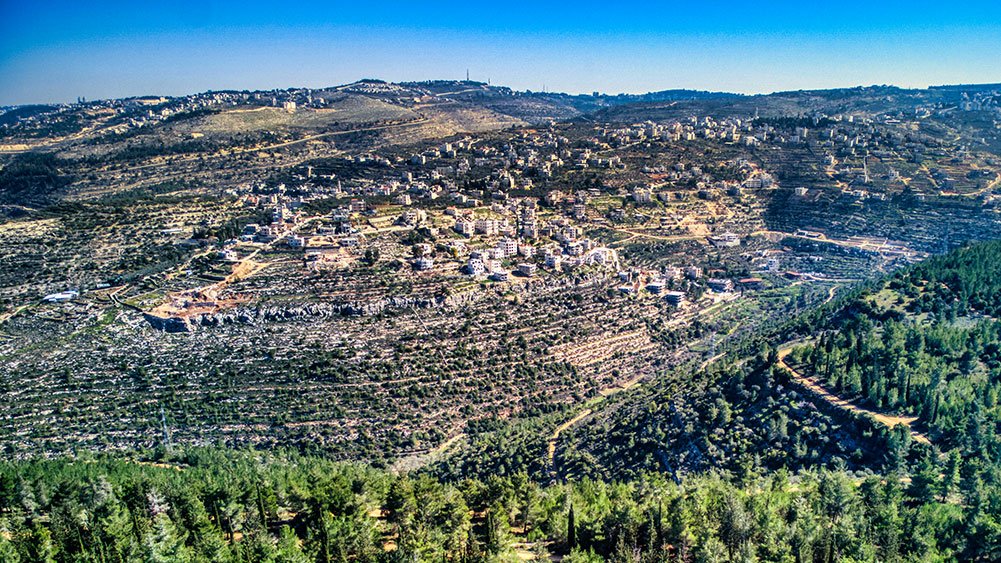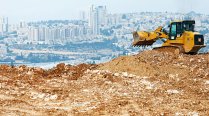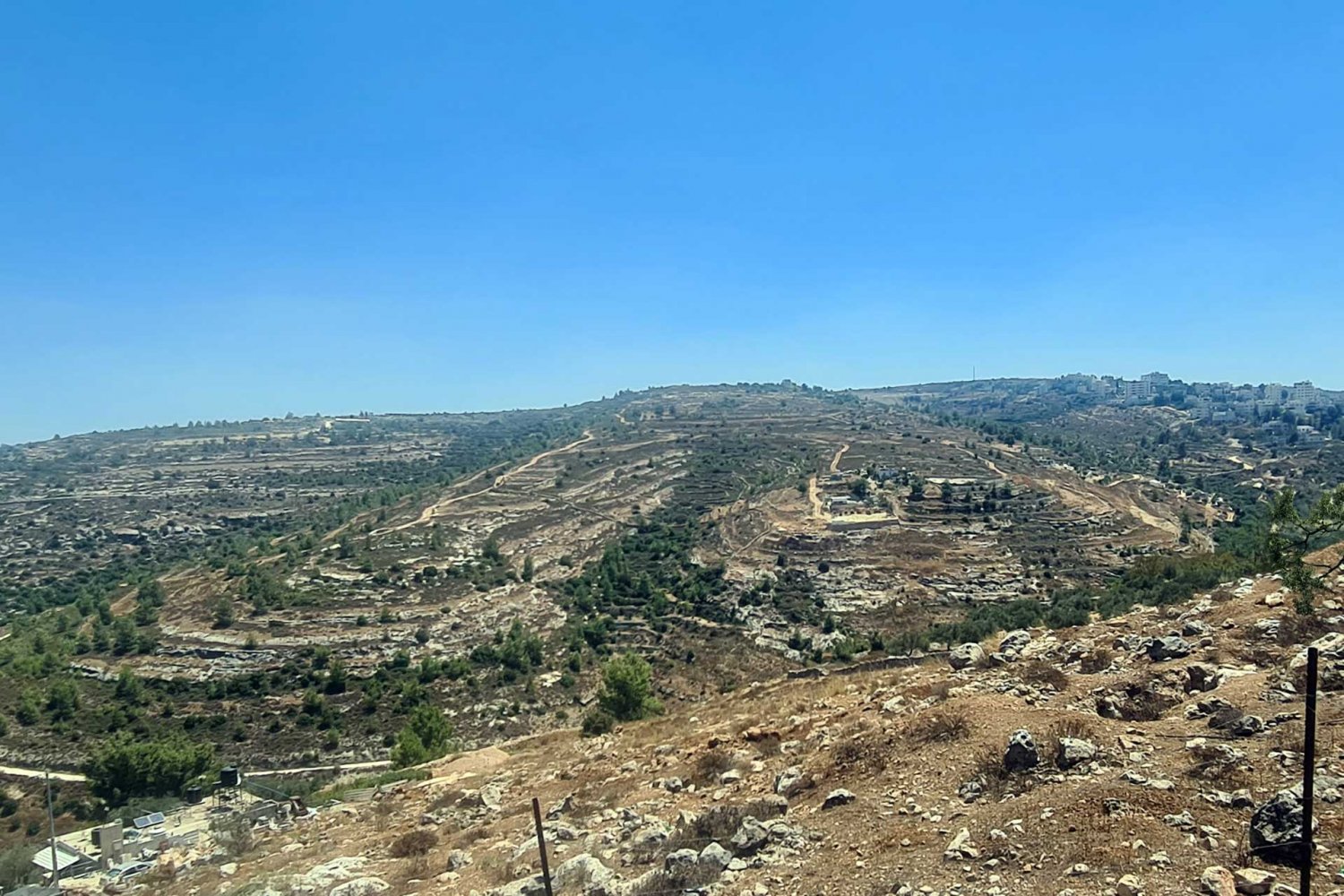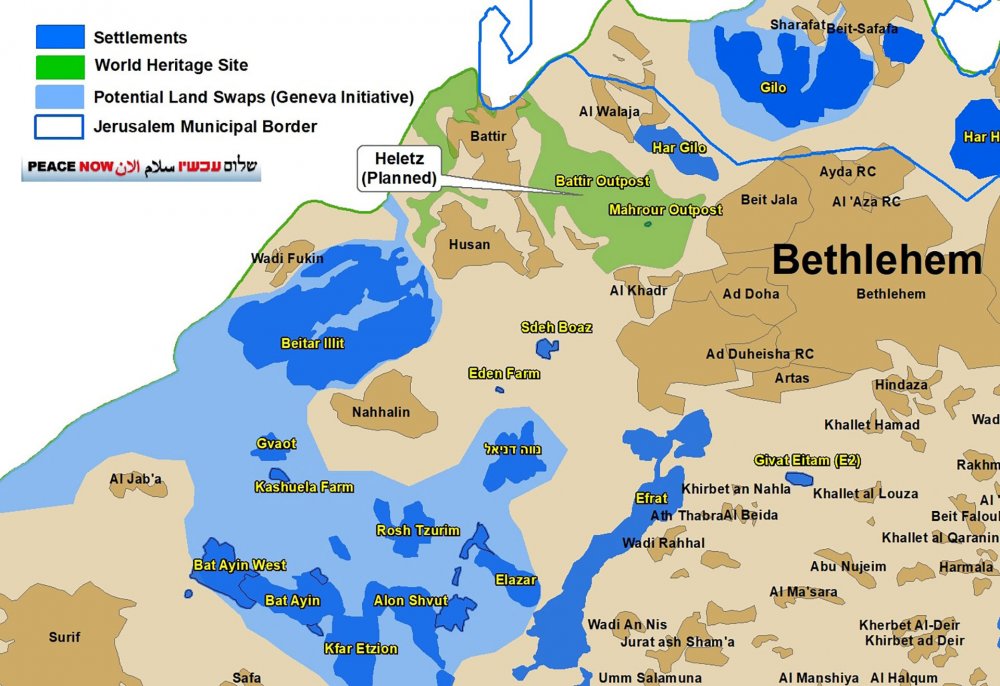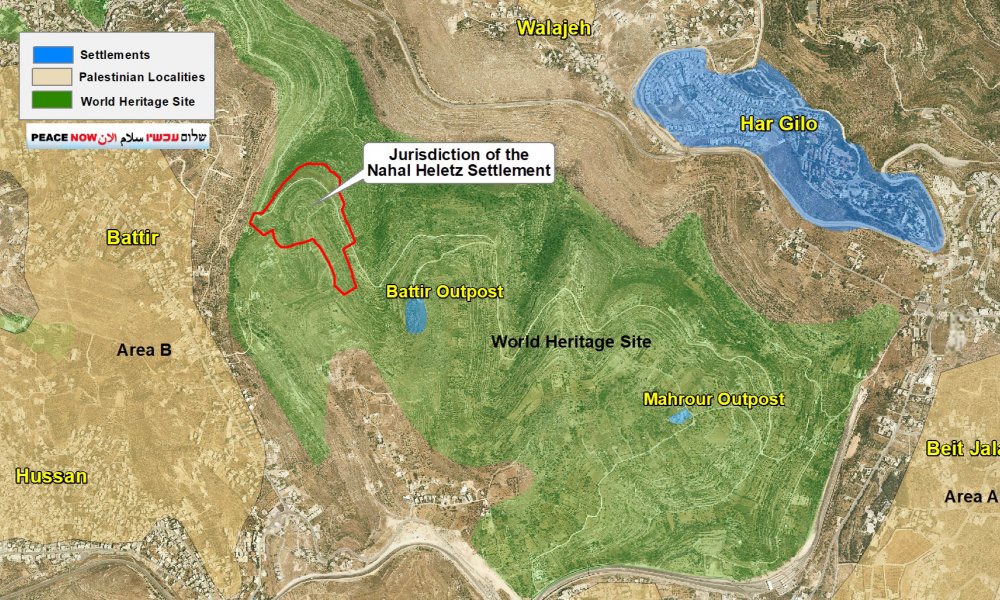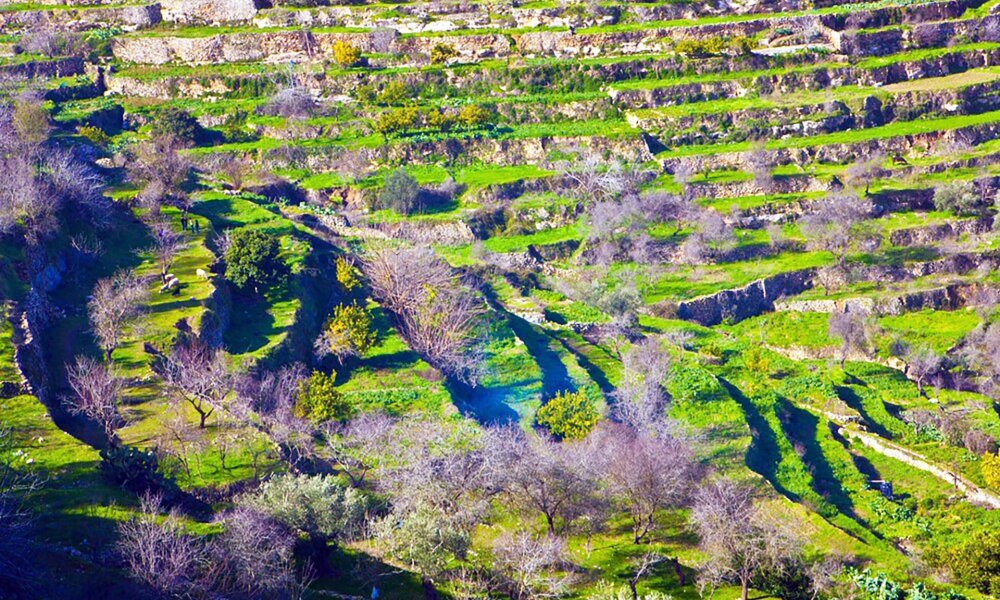While world attention is focused on Israel’s relentless war on Gaza, Israeli settlement expansion southwest of Jerusalem continues to accelerate at breakneck speed. The government is now claiming as the location for a new illegal settlement an area that sits on Palestinian land within a UNESCO World Heritage List site.
The World Heritage Site consists of 11 square kilometers southwest of Jerusalem that span the area between the Palestinian villages of Husan, Battir, and al-Walaja, and the towns of Beit Jala and al-Khadir. The unique agricultural landscape, abundant with natural springs, is renowned for its terraces and ancient and sophisticated irrigation systems and has been cultivated and maintained by local communities for thousands of years. About 25,000 Palestinians live in these villages.1
On August 14, 2024, the Civil Administration’s Blue Line Team released the so-called blue line for the planned new settlement of Nalah Heletz, which would be the first new settlement to be built in the West Bank since 2017. It encompasses an oddly shaped area of 602.7 dunums (around 150 acres) adjacent to two existing illegal settlement outposts (Battir, re-established for a third time on December 24, 2023, and Mahrour, established in 2019).2 This step indicates Israel declaring this land as state or public land, and it is a pre-requisite for approving a construction plan3 and an indication of a new settlement soon to come.

